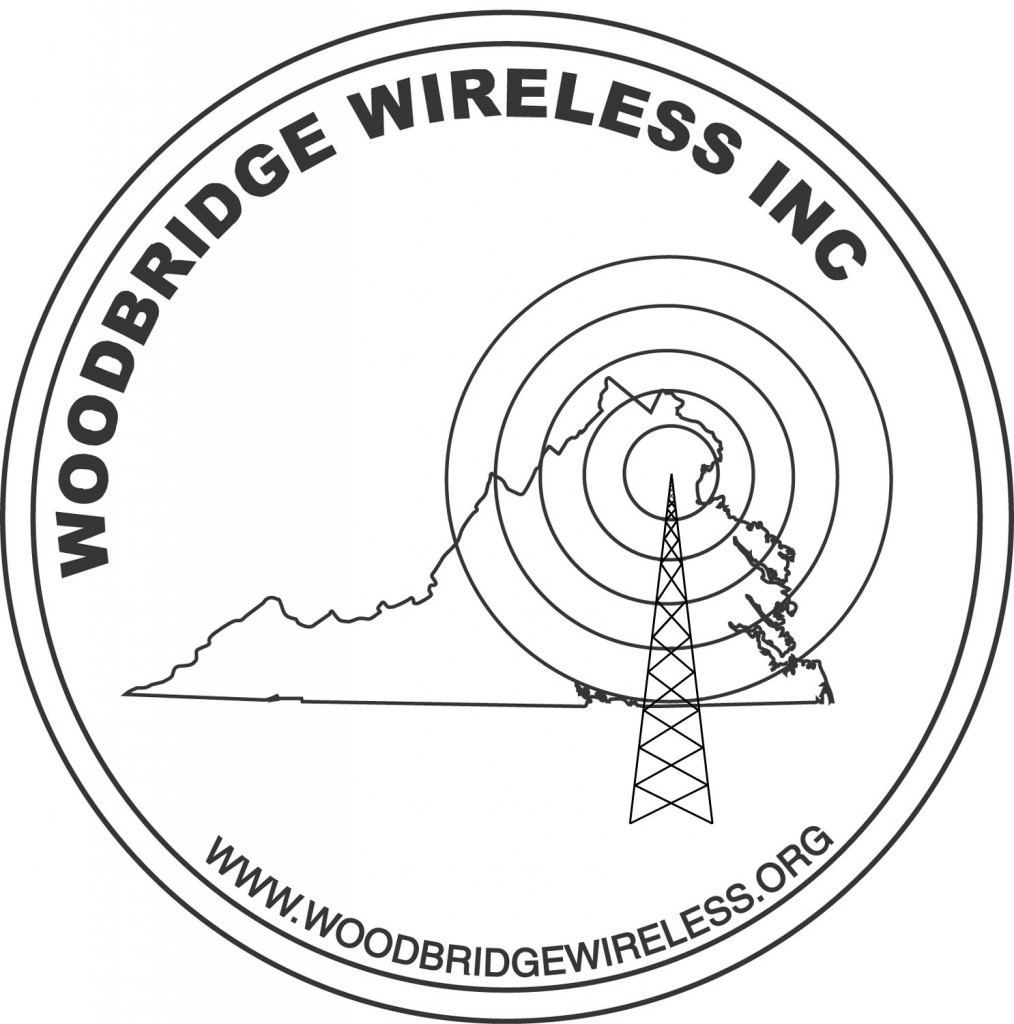Woodbridge Wireless has installed three full duplex repeaters on frequency pairs co-ordinated by The Mid Atlantic FM and Repeater Council (T-MARC). These frequencies are 147.24 MHz with plus offset, 224.78 MHz with minus offset and 444.90 MHz with plus offset. Woodbridge Wireless began using these frequency pairs over 25 years ago when the first WWI repeater on 147.24 was installed. All machines identify using the call W4IY.
The antennas are installed on top of a Prince William County Service Authority water tank located near the intersection of Old Bridge Road and Hedges Run in Woodbridge, Virginia. This site is 310 feet above sea level and the center of radiation of the antennas is 110 feet above that. The heavy duty Celwave PD220-2 (147.24), PD220-8B (224.78) and PD455-5 (444.90) antennas have gains of 5.25, 5.25 and 10db respectively. These antennas are 20 to 22 feet long and are connected to the equipment in WWI’s 10’x16’ repeater building at the base of the water tank via 150 foot runs of 7/8” foam dielectric hard line.
Located in the repeater building are devices unique to each repeater called duplexers which split the transmit and receive frequencies allowing full duplex operation using one antenna and one feed line per repeater. There is a Sinclair Laboratories BpBr duplexer for 147 (plus a spare), a WACOM unit for 224 and a Phelps Dodge duplexer for 444.
Both the 147.24 and the 444.90 machines are Motorola MICOR units. They are equipped with the Continuous Tone Coded Squelch System (CTCSS), perhaps better known by the Motorola trademark of “PL™” (Private Line). The 147.24 MHz machine uses a PL tone of 107.2 Hz and the 444.90 MHz machine has a PL tone of 127.3 Hz. Both carrier access and PL access are supported on these machines. Users of the PL feature will generally find improved squelch sensitivity on these repeaters compared to those using carrier access.
Kendecom manufactured the 224.78 machine. This repeater was originally built with its own integral microprocessor based controller, but in the current configuration, that controller has been disconnected and just the receiver and transmitter are connected to the external controller. Access to this machine is via carrier squelch.
These machines are all interfaced to a Link Communications RLC-2a Controller. The single controller integrates all three repeaters and the digital NOAA weather alert receiver into a flexible system configuration. WWI has fully redundant controllers so that system operation can be quickly restored in the event of a control system failure.
All equipment is operated from a 14 V DC supply consisting of 550 AH primary cells floated across redundant modified Astron 50 A power supplies. In the event of AC power loss, no interruption of services occurs.

